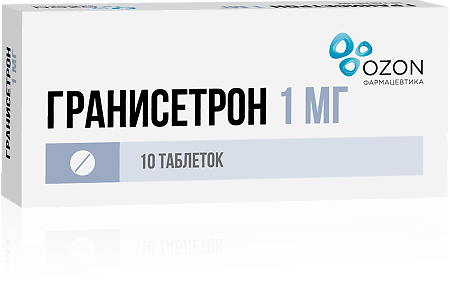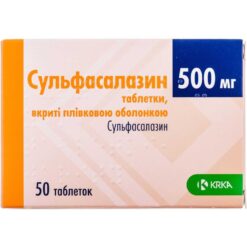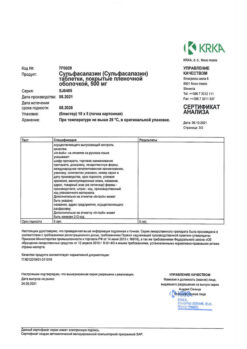No products in the cart.
Granisetron, 1 mg 10 pcs
€1.00
Out of stock
(E-mail when Stock is available)
Description
Granisetron is a selective antagonist of serotonin (5-hydroxytryptamine) 5-NT3 receptors located in the vagus nerve endings and trigger zone of the bottom of the IV ventricle of the brain (has almost no effect on other serotonin receptors) with a pronounced antiemetic effect.
Studies have shown that granisetron has low affinity for other types of receptors, including other types of serotonin receptors and D2-dopamine receptors. It eliminates vomiting resulting from excitation of the parasympathetic nervous system due to serotonin release by enterochromaffin cells.
Granisetron eliminates nausea and vomiting caused by cytotoxic chemotherapy, radiation therapy, and postoperative nausea and vomiting.
It does not affect plasma concentrations of prolactin and aldosterone.
Granisetron blocks potassium hERG channels of the heart, affecting myocardial repolarization. On electrocardiogram (ECG) indices this is manifested in changes of PR, QRS and especially in prolongation of QT interval.
It has no mutagenic effect in vivo and in vitro.
When administered in high doses for life it increases the risk of hepatocellular tumors in animals.
Pharmacokinetics
Absorption
Absorption of granisetron after oral administration is fast and complete, but absolute bioavailability is reduced to 60% due to the “first pass” effect through the liver. Food intake does not affect the bioavailability of granisetron.
Distribution
Granisetron is distributed to organs and tissues (including plasma and erythrocytes), average volume of distribution is 3 l/kg. Binding to plasma proteins is approximately 65%.
Metabolism
Biotransformation occurs primarily in the liver by N-demethylation and oxidation of the aromatic ring with subsequent conjugation. The major metabolites are 7-OH-granisetron, 7-OH-granisetron sulfate, and glucuron conjugates. Some of them, such as 7-OH-granisetron and indazolin N-desmethyl granisetron, have antiemetic effects, but the probability of a significant effect in humans is low. In vitro studies have shown that ketoconazole inhibits the metabolism of granisetron, suggesting the involvement of CYP3A subfamily isoenzymes. Other in vitro studies have shown that granisetron does not affect the activity of CYP3A4 isoenzyme.
Excretion
The kidneys excrete an average of 12% unchanged and 47% of the dose as metabolites. The remaining 41% are excreted as metabolites in intestine.
Half-life (T1/2) in oral administration is 9 hours, with wide individual variability.
Plasma concentrations of granisetron do not correlate clearly with its antiemetic effect. The therapeutic effect is observed even when granisetron is no longer detectable in plasma.
Pharmacokinetics of granisetron during oral administration maintains a linear character in the range of doses up to 2.5 times higher than recommended.
Special patient groups
In patients with hepatic impairment due to neoplastic changes, total plasma clearance values are approximately half those of patients with normal liver function.
Despite these studies, no dose adjustment is required.
Indications
Indications
Active ingredient
Active ingredient
How to take, the dosage
How to take, the dosage
Interaction
Interaction
Special Instructions
Special Instructions
Patients with signs of partial intestinal obstruction should be under medical supervision after the drug administration, since the drug may decrease intestinal motility.
Granisetron is safe for use in elderly patients and patients with renal or hepatic insufficiency.
As with other serotonin 5-NT3 receptor antagonists, changes in ECG parameters have been reported with granisetron therapy, including cases of QT interval prolongation. These changes were insignificant and, as a rule, had no clinical significance, in particular, had no signs of proarrhythmogenic action. However, in patients with pre-existing arrhythmias or diseases accompanied by cardiac conduction abnormalities, the observed changes in ECG parameters during granisetron therapy may lead to clinically significant consequences. Therefore, caution should be exercised when using the drug in patients with concomitant cardiac diseases receiving cardiotoxic chemotherapy and/or having concomitant electrolyte imbalances.
Cases of cross-sensitivity development between serotonin 5-NT3 receptor antagonists have been reported.
The patient’s condition should be monitored if it is clinically necessary to use granisetron concomitantly with other serotonergic drugs.
Patients with rare hereditary galactose intolerance, lactase deficiency, or glucose-galactose absorption disorders are not recommended to use the drug.
There are no data on the drug effect on the ability to drive vehicles. However, caution should be taken taking into account that drowsiness and dizziness have been reported during the therapy.
In case of these symptoms patients are advised to refrain from driving and engaging in other potentially dangerous activities requiring increased concentration and quick psychomotor reactions.
Contraindications
Contraindications
Side effects
Side effects
Overdose
Overdose
Additional information
| Shelf life | 3 years. Do not use after the expiration date. |
|---|---|
| Conditions of storage | Store in a dark place at temperatures under 25 ºC. Keep out of reach of children. |
| Manufacturer | Ozon, Russia |
| Medication form | pills |
| Brand | Ozon |
Related products
Buy Granisetron, 1 mg 10 pcs with delivery to USA, UK, Europe and over 120 other countries.











